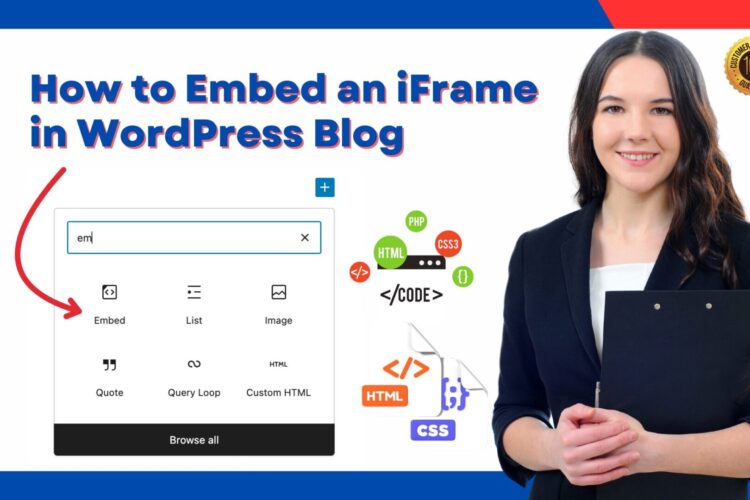
Programmatic SEO is transforming how websites scale content creation and optimize for search engines. WordPress, being one of the most versatile platforms, offers unparalleled opportunities to implement programmatic SEO effectively.
With the right tools and strategies, you can automate the creation of thousands of optimized pages to target specific keywords, boost visibility, and drive traffic. Here, we’ll explore how to implement programmatic SEO in WordPress, provide actionable strategies, and share a real-world case study to showcase its effectiveness.
Quick View
What Is Programmatic SEO?
Programmatic SEO involves automating the creation of web pages at scale, targeting specific long-tail keywords and user intents. It uses structured data, dynamic templates, and automation tools to generate unique, optimized content efficiently.
Why Use Programmatic SEO on WordPress?
- Scalability: Create thousands of pages optimized for different keywords.
- Efficiency: Automate repetitive tasks, saving time and resources.
- Improved Rankings: Target niche keywords that attract highly relevant traffic.
- Versatility: WordPress’s plugins and themes make it ideal for implementing programmatic SEO.
How Programmatic SEO Works in WordPress
Programmatic SEO in WordPress combines automation with data-driven strategies. Here’s how it works:
- Data Collection: Compile structured data such as product information, locations, or services.
- Dynamic Templates: Create templates with placeholders for dynamic content.
- Automation Tools: Use plugins to automate the process of populating templates with data.
- Optimization: Ensure each page meets SEO best practices and adds value for users.
Step-by-Step Guide to Implement Programmatic SEO in WordPress
1. Collect and Organize Data
Data is the foundation of programmatic SEO. Collect structured data relevant to your niche, such as:
- Product specifications
- Service details
- Location-specific information
Tools to Use:
- Google Sheets or Excel for small datasets
- Airtable or MySQL for larger datasets
2. Design SEO-Friendly Templates
Templates simplify the process of creating consistent, optimized pages.
Best Practices:
- Use H1 tags for titles and H2 for subheadings.
- Include meta descriptions with dynamic keywords.
- Optimize for mobile responsiveness and speed.
3. Automate Page Creation
WordPress plugins make it easy to automate the creation of programmatic pages.
Recommended Plugins:
- WP All Import: Imports data from CSV/XML files to populate templates.
- Multiple Page Generator: Creates pages based on dynamic variables like keywords or locations.
- Advanced Custom Fields (ACF): Adds dynamic content fields to templates.
4. Optimize for SEO
Ensure every page meets SEO best practices.
- Use Yoast SEO or Rank Math for real-time optimization suggestions.
- Add schema markup for better SERP visibility.
- Include alt text for images and descriptive URLs.
5. Monitor and Improve
Track the performance of your programmatic SEO pages using tools like Google Analytics and Search Console. Identify underperforming pages and update them to improve rankings.
Case Study: A Travel Directory Using Programmatic SEO on WordPress
A travel directory website aimed to increase organic traffic by creating location-specific pages for hotels, restaurants, and attractions. With thousands of potential keywords, manual content creation was impractical.
Implementation
- Data Collection: The team gathered a comprehensive dataset of locations, including city names, hotel details, and nearby attractions.
- Templates: They designed dynamic templates using Elementor, incorporating placeholders for titles, meta descriptions, and images.
- Automation: Using WP All Import, they automated the creation of over 5,000 unique pages.
- Optimization: Pages were optimized with long-tail keywords, internal links, and structured data.
Results
- Traffic Growth: Organic traffic increased by 85% within 6 months.
- Rankings: The site ranked in the top three positions for over 500 location-specific keywords.
- Engagement: Bounce rates dropped by 20% due to highly targeted, user-relevant pages.
Best Practices for Programmatic SEO in WordPress
- Focus on Long-Tail Keywords: Target specific, low-competition keywords to attract niche audiences.
- Add Unique Content: Avoid duplicate content by including dynamic elements like user reviews or local tips.
- Use Internal Links: Connect programmatic pages to improve navigation and SEO.
- Optimize for Mobile: Ensure pages load quickly and display well on mobile devices.
- Regularly Update Content: Keep information accurate and relevant to maintain rankings.
Future Trends in Programmatic SEO for WordPress
- AI Integration: Tools like ChatGPT, and AI bot will help create more personalized, dynamic content.
- Voice Search Optimization: Focus on conversational keywords to capture voice search queries.
- Improve Schema Markup: Use structured data to improve visibility in SERP features.




